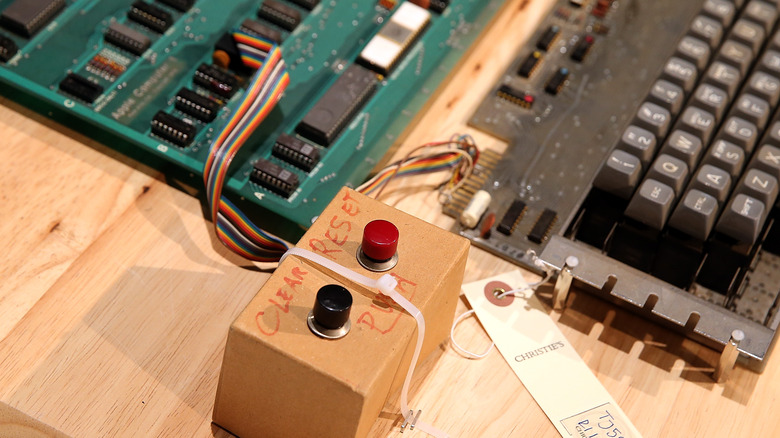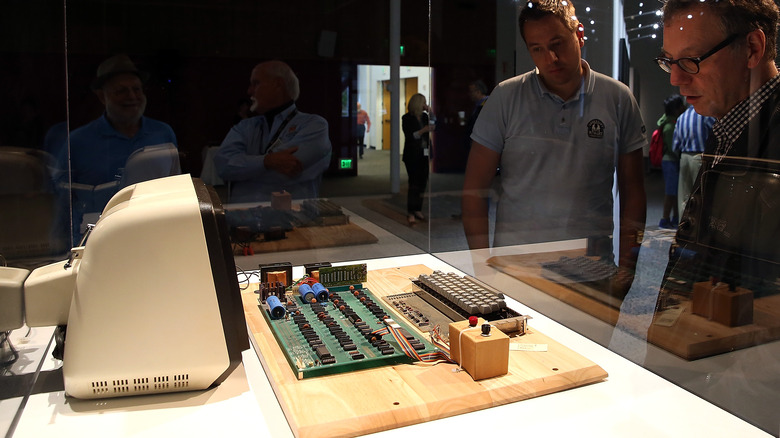Why Someone Spent Over $442,000 For This Old Apple Computer
If you happen to have $442,000 burning a hole in your pocket, you're also spoiled for choice on how to spend it. That kind of money could net you a cherry 1970 Mustang, the handwritten first draft of "Candle in the Wind" (allowing for some light time travel to 1998), or some vintage art of one of the world's most popular cartoon characters.
Alternatively, you could drop by RR Auction and buy a computer with 4KB of RAM, a processor running at 1 MHz, and a screen 40 characters wide (via Apple Museum). By comparison, per Best Buy, a $100 Chromebook has exactly one million times more memory, a processor 2800 times faster, and a hard drive, which many people find useful.
On the other hand, between the Chromebook and the $442,000, only one was hand-built by Apple legend Steve Jobs. That could represent an X factor in the pricing, we suppose. Here's what we know.
Birth of a dynasty
What RR Auctions sold for $442,000 was a legendary piece of computing history. One of the world's last working Apple I computers went under the gavel, complete with period keyboard and a hand-lettered serial number, "01-00002," in the hand of Jobs himself (via RR Auction).
The Apple I wasn't the company's breakthrough product. That distinction belongs to its successor, the sensibly named Apple II (via History-Computer). Rather, the Apple I demonstrates where modern personal computing began and just how far it's come. Each was hand-built by Steve Jobs and its designer, computing king Steve Wozniak, alongside a few friends. Per the Smithsonian, the machine was little more than a motherboard with attachments for a keyboard and screen, lacking even a hard drive for storing software — programs came in external cassettes. It was an enthusiast's machine, built for people who enjoyed playing with computers for their own sake.
At the same time, the Apple I was one of the first computers made for the general market. Jobs and Wozniak built roughly 200 across ten months in 1976 and 1977. Most sold through sale at The Byte Shop, a local tech chain. The Byte Shop was responsible for Apple 1's great step forward – owner Paul Terrell would only sell the machines if they came pre-assembled (via Cult of Mac). Prior to Terrell's mandate, computers sold as kits. Jobs and Wozniak rose to the occasion, and the Apple I hit market as one of the first computers to arrive more or less ready to work, no assembly required by the end user. In that respect, in a time of kit machines and massive mainframes too bulky and demanding for anyone but corporations to operate, the Apple I represented one of the world's first true personal computers.
In the end, the 200 original Apple computers were a footnote to the corporation's global success. That said, it prepared the ground. Per History-Computer, the Apple II sold about 6 million units in its operational life. People were ready for personal computing and Apple was one of the first companies to deliver.

